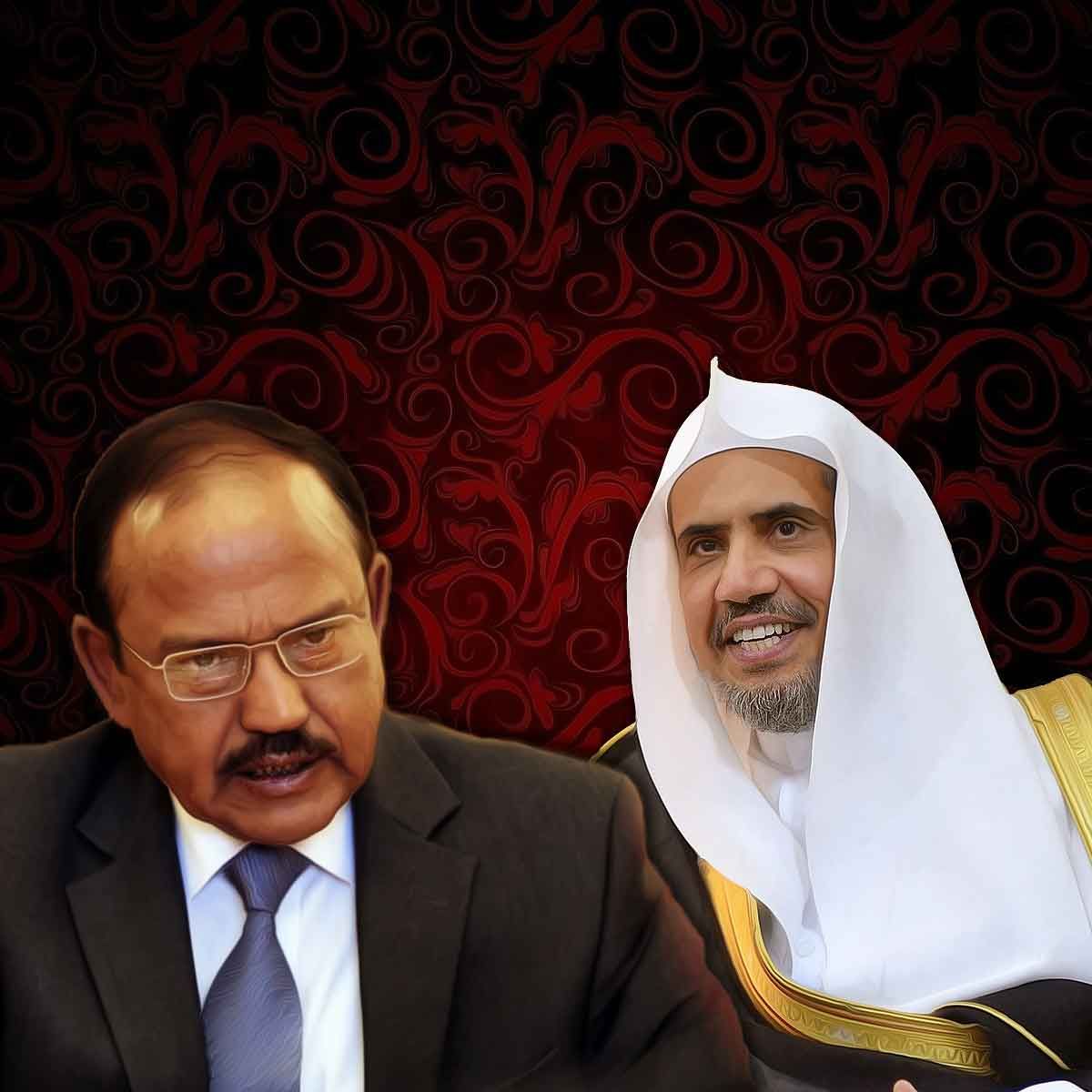MORE COVERAGE
Twitter Coverage
Satyaagrah
Written on
Satyaagrah
Written on
Satyaagrah
Written on
Satyaagrah
Written on
Satyaagrah
Written on
JOIN SATYAAGRAH SOCIAL MEDIA
"यत्र तत्र सनातन सर्वत्र": Recently unearthed in Pakur, Jharkhand, a Pala-Sena era murti of Devi Parvati, flanked by Ganesha and Kartikeya, holds timeless artifacts like a kamandala, sugarcane branch, and Shiva-lingam, dating back to the 7th century

Early Wednesday morning, a group of laborers working in the Bansloi River in Kulbona village made an astonishing discovery that has since captured the attention of the entire region. As they dug through the soft riverbank sands, their shovels clanked against an unusually hard object buried beneath the surface.
|
Upon clearing away the surrounding sand, the workers uncovered what appeared to be a "shining stone idol". With great care, they excavated around the stone, revealing a significant artifact—a black stone idol, which was cautiously lifted from its watery grave. This unexpected find quickly caused a buzz among the local communities as word spread about the discovery.
The idol, nestled in the heart of the block where the Bansloi River flows, has been speculated to hold considerable historical value. Yet, its true age and the full extent of its significance remain shrouded in mystery pending a detailed examination. The Archaeological Department has been called upon to conduct a thorough investigation to ascertain the idol's origins and age.
Meanwhile, preliminary estimates from the Geological Department suggest that the idol could be "2,000 years old". This speculation is buoyed by the area's history of similar finds; notably, another black stone idol, this one of Goddess Kali, was unearthed approximately one kilometer downstream roughly 200 years earlier. This pattern of discoveries hints at a rich, yet largely unexplored archaeological layer beneath the riverbed, potentially teeming with artifacts of significant cultural and historical import.
During the routine excavation work on Wednesday at the Kulbona sandbank along the Bansloi River yielded an extraordinary find—a black stone idol, sparking intrigue and anticipation regarding its historical significance. This discovery at the riverbank is not only a matter of local interest but potentially of great historical importance, suggesting deeper, unseen layers of history beneath the everyday.
The Archaeological Department is now tasked with the precise dating of this artifact. Their investigation is crucial, as initial assessments hint at a rich historical narrative. Experts from the Geological Department have provided a preliminary estimate, suggesting that the idol "could be around 2,000 years old."
Further stirring local curiosity, the Archaeological Department has expressed a tentative hypothesis that "the idol might date back to the 7th century." This period is significant in regional history, often marked by the flourishing of religious and cultural artifacts.
The find is reminiscent of a similar discovery made about 200 years ago, when another black stone idol—this one of Goddess Kali—was uncovered about a kilometer away in the same river. That idol has since been revered and is currently housed in the local Burhababa Shiva Temple, where it stands as a testament to the spiritual and historical tapestry of the community.
These discoveries, made centuries apart yet within a short distance of each other, underscore the Bansloi River as a site of potentially significant archaeological wealth. Each find adds a layer to the understanding of the area's past, weaving a richer narrative of the cultural and spiritual life that once thrived along these riverbanks.
|
Idol Found During Sand Excavation
In the quiet flow of the Bansloi River, amidst the regular duties of sand excavation, a remarkable discovery unfolded. Sandeep Let, a local laborer from Kulbona village, was working alone on that fateful Wednesday when his routine task took an unexpected turn. As he dug into the riverbank, his shovel struck something hard repeatedly. Initially dismissing it as a mere stone, Sandeep attempted to lift it but found it too heavy to manage alone.
Realizing the need for assistance, he called over his fellow laborer, Prithvi Let. Together, they touched the object again and sensed that it was no ordinary stone. "As soon as they touched the stone, they realized it wasn't just a stone." Carefully, they began to excavate around it, and to their astonishment, they uncovered a black stone idol lying flat beneath the sand.
The discovery quickly caught the attention of the other laborers. "Soon, dozens of village laborers arrived and helped clear the sand around the idol." Their collective efforts soon freed the idol from its sandy grave, revealing it in its entirety to the awe-struck workers.
The impact of this discovery was immediate and profound among the villagers. With a surge of reverence and excitement, they retrieved the idol from the river and placed it within the sacred confines of the local temple premises. "The villagers then retrieved the idol and began worshipping it, believing it to be an idol of Goddess Durga."
Word of the discovery spread rapidly through the village and beyond, igniting a fervor that drew crowds from surrounding areas. "The news of the idol emerging from the Bansloi River spread like wildfire." A palpable buzz filled the air as people gathered to witness the idol, newly christened as a divine manifestation of Goddess Durga.
Prompted by the reports, a contingent of officials, including Maheshpur SDPO Vijay Kumar, CO Sanjay Kumar Sinha, BDO Siddharth Shankar Yadav, CI Rajesh Saha, and police station in-charge Sunny Suprabhat, swiftly arrived at the village with their team.
As the officials began preparations to transport the idol, a palpable tension enveloped the scene. The villagers, deeply connected to the idol since its discovery, mounted a spirited resistance. "The villagers resisted for hours, refusing to let the idol be taken away." Their emotional plea was clear: the idol, unearthed by their own, belonged to the village.
The villagers passionately argued, emphasizing the idol's local significance. "The villagers insisted that the idol was found by the local laborers and it belongs to their village." They voiced ambitious plans to enshrine the idol within a grand temple specifically constructed for it in Kulbona, envisioning it as a centerpiece of spiritual and community life.
After a lengthy negotiation, a semblance of agreement was reached when the administration offered assurances about the idol's future. "After receiving assurances from the administration, the villagers allowed the idol to be taken away." This promise marked a crucial turning point, easing tensions and fostering a temporary peace between the villagers and the authorities.
SDPO Vijay Kumar, reflecting on the day's events, acknowledged the idol's historical significance. "The idol appears to be ancient," he remarked, summarizing the day's tumultuous events and the community's deep connection to the artifact. "The villagers of Kulbona had retrieved the idol from the river and placed it in the village temple premises." Despite the community's initial reluctance, the idol was temporarily moved to the local police station, ensuring its safety while further investigations and decisions regarding its permanent placement are undertaken.
Idol's Picture Going Viral on Social Media
The discovery of a black stone idol in the midst of a routine sand excavation at the Bansloi River has quickly transcended local borders, captivating a wide audience across social media. Pictures and videos of the idol have spread rapidly, becoming viral sensations. This widespread exposure has sparked intense public interest and speculation regarding the origins and history of the idol. "People are speculating various things about the idol." As the images circulate, they have ignited strong religious sentiments and curiosity, with many eager to learn more about the idol's provenance, its age, and the broader historical context of its emergence from the river.
What Experts Say
In response to the burgeoning interest, Dr. Prof. Ranjit Kumar Singh, a noted geologist, has provided insights into the material composition of the idol, identifying it as made of igneous rock. Following its discovery, Dr. Singh quickly facilitated a preliminary examination by sharing photos with specialists in the Archaeological Department in New Delhi. "He mentioned that after the idol was found, he sent photos to experts in the Archaeological Department in New Delhi for discussion." These experts have postulated that the idol might date back to the 7th century, offering a tentative historical framework for its creation.
Further analysis by the Archaeological Department has led to a revision in the initial identification of the deity represented by the idol. Contrary to local beliefs that it depicted Goddess Durga, experts have now classified it as an idol of Parvati, accompanied by figures of Ganesha and Kartikeya. "Experts from the Archaeological Department believe it to be an idol of Parvati, not Durga." The idol, remarkably preserved, showcases Devi Parvati in a dynamic representation, holding a kamandala, a sugarcane branch, and a Shiva-lingam, with her lower right hand posed in the Varada mudra—a gesture of blessing. This composition aligns with iconographic traditions from the Pala-Sena era, further emphasizing its historical and cultural significance.
Amidst these revelations, the local community's attachment to the idol remains strong. The villagers have expressed a fervent wish to retain the idol within their locality. "The villagers have requested that they be allowed to keep the Devi murti and worship it in a temple that will be built for Her." In light of the idol's importance, both spiritually and historically, there is a growing anticipation for further investigations. The department has indicated that "the department may soon send a team to investigate further," promising more detailed studies that could shed further light on this remarkable find.
 |
 Support Us
Support Us
Satyagraha was born from the heart of our land, with an undying aim to unveil the true essence of Bharat. It seeks to illuminate the hidden tales of our valiant freedom fighters and the rich chronicles that haven't yet sung their complete melody in the mainstream.
While platforms like NDTV and 'The Wire' effortlessly garner funds under the banner of safeguarding democracy, we at Satyagraha walk a different path. Our strength and resonance come from you. In this journey to weave a stronger Bharat, every little contribution amplifies our voice. Let's come together, contribute as you can, and champion the true spirit of our nation.
 |  |  |
| ICICI Bank of Satyaagrah | Razorpay Bank of Satyaagrah | PayPal Bank of Satyaagrah - For International Payments |
If all above doesn't work, then try the LINK below:
Please share the article on other platforms
DISCLAIMER: The author is solely responsible for the views expressed in this article. The author carries the responsibility for citing and/or licensing of images utilized within the text. The website also frequently uses non-commercial images for representational purposes only in line with the article. We are not responsible for the authenticity of such images. If some images have a copyright issue, we request the person/entity to contact us at This email address is being protected from spambots. You need JavaScript enabled to view it. and we will take the necessary actions to resolve the issue.
Related Articles
- “There are few reasons for telling the truth, but for lying the number is infinite": Hotee opened a School in Varanasi for women, taught Poetry, Law, Maths & Ayurveda, awarded title "Vidyalankar" by Kashi Pandits long before Savitribai Phule was even born
- "गुरुर्ब्रह्मा गुरुर्विष्णुः गुरुर्देवो महेश्वरः": Saga of Sant Ramdas, who shaped Maharashtra's spiritual and political landscape, guided Shivaji, and left a legacy of devotion & wisdom in the heart of Hinduism through his profound teachings and life
- "कण कण शंकर": Fishermen in Gujarat discover a 140kg ancient orange crystal Shivling in their net, stunning the local community, this rare find, potentially dating back centuries, ignites spiritual fervor and debate over its rightful home in sacred temples
- 26th December to be observed as Veer Baal Diwas to pay gratitude to martyr sons of Guru Gobind Singh: PM Modi
- "पितृ पक्ष": Amidst the chaos of modernity, the timeless ritual of ancestor worship stands firm, bridging the past & present, not mere tradition; its the soul's whisper, echoing gratitude & seeking blessings from those who once tread the paths we now walk
- "Temple will be an ever-present reminder that God intended the family to be eternal": Thirunakkara Mahadevar Temple situated in the heart of Kottayam is one of the 108 revered Shivalayas in Kerala, preserves sculptures and murals of Hindu deities
- "Culture is the widening of the mind and of the spirit": Spectacular sculptures of Samudra Manthan at Suvarnabhumi International Airport, Bangkok | In Thailand Hindu Dharma is presented in Idol form, but in India Hindu Gods are denigrated by Hindus itself
- Mahakal Temple in Ujjain to get expanded complex with Rs 714 crore in such a way that there will be a feeling of grandeur and divinity: Another reason for devotees to celebrate after Kashi Vishwanath corridor
- “There are infinite paths that you can take. The one that feels most true is your dharma”: Gayatri Mantra, also referred as “Mother of the Vedas” because it is considered to be the essence of all Vedic knowledge and key to unlocking the spiritual wisdom
- "The formidable power of geography determines the character and performance of a people": Fascinating map of all the places of ancient India as mentioned in Mahabharata, put on display in Purana Qila, which is the ancient Indraprastha of Mahabharata
- “I am Shakti, as well as Shiva. I am everything male and female, light and dark, flesh and spirit": History of Shivalinga at Tongaji Temple, Nagoya, Japan, a Buddhist temple of the Sōtō Zen sect located in Nagoya, originally built in 1532 by Oda Nobuyuki
- "There is more power in a good strong hug than in a thousand meaningful words": In Hinduism, we have been communicating with the cow since beginning and ridiculed for that, Guess what? West is now using Cow Hug therapy to cure their stress and anxiety
- "You are what you believe in. You become that which you believe you can become": Google Software Engr. launches GitaGPT that deploys AI to answer your questions about life problems, “What if you could talk to Bhagavad Gita? To Lord Krishna himself?”
- Hindus need temples today more than ever and here is why
- Rana Sanga, the symbol of bravery who defeated Sultan Ibrahim Lodhi and fought Muslim Terrorists for Hindu Existence



























